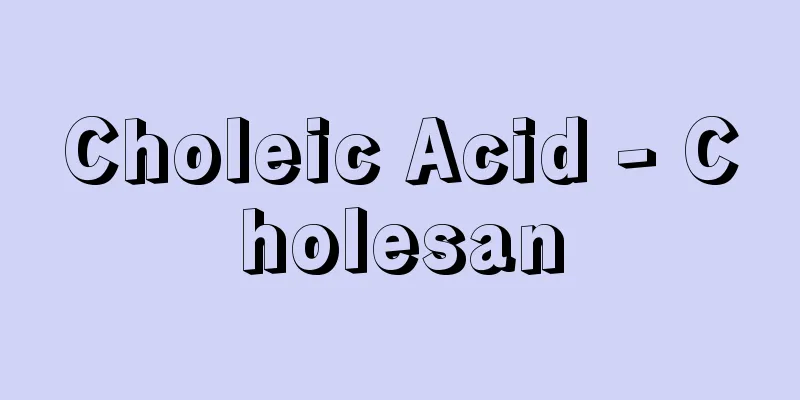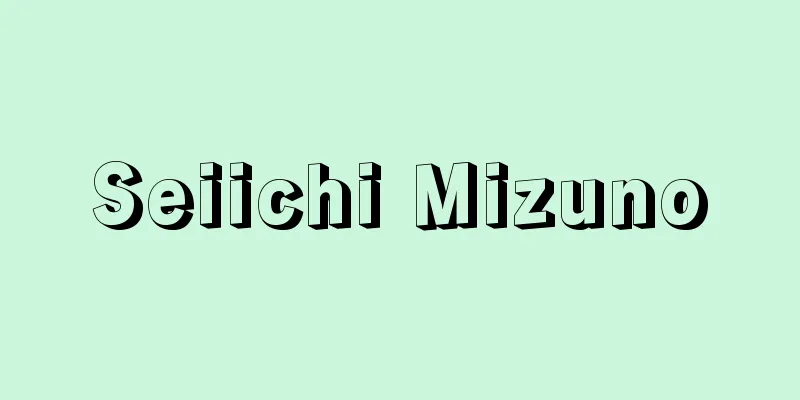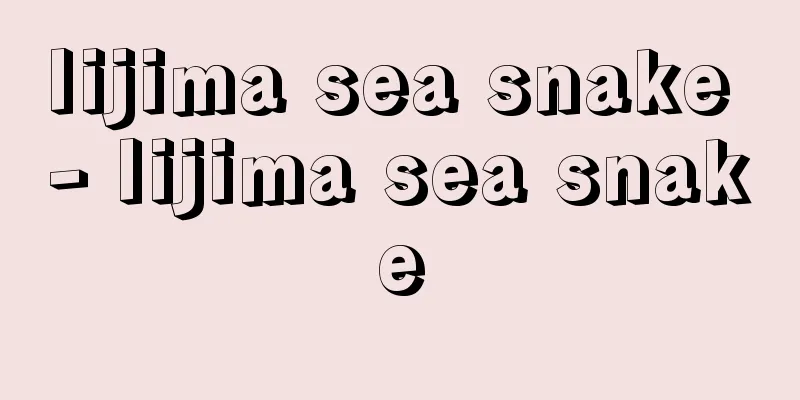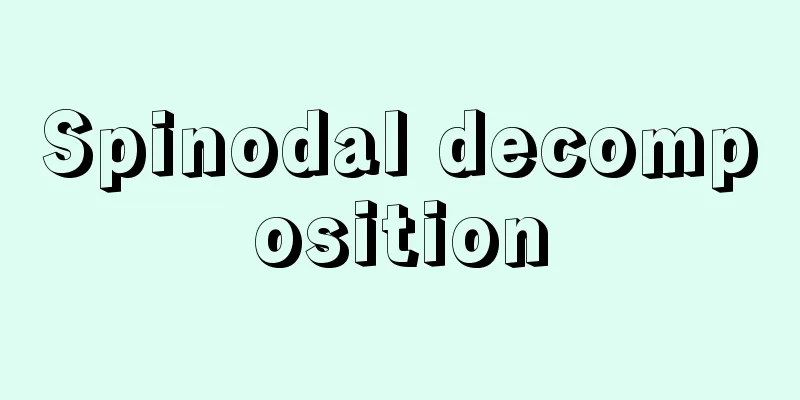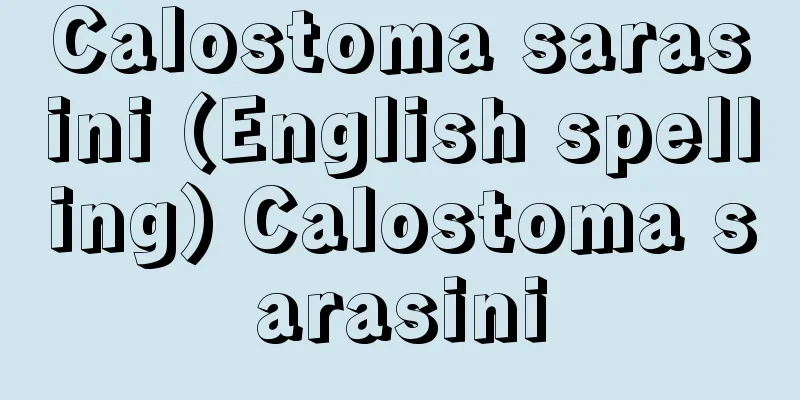Right to education
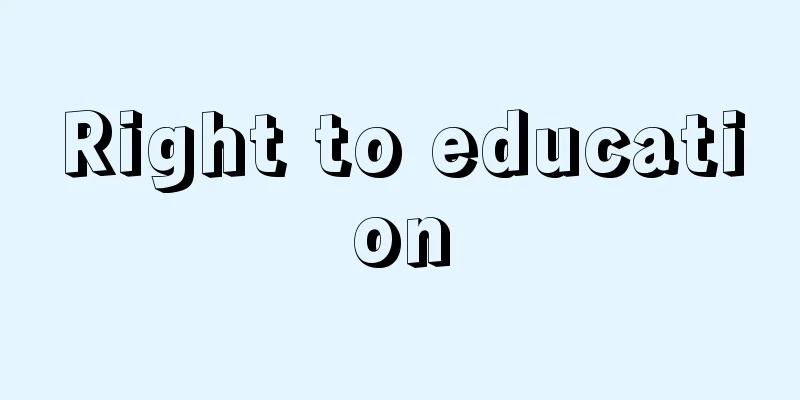
|
In a broad sense, it is sometimes used to refer to the collective rights and human rights of citizens regarding education (human rights in education), but in general it refers to the right and authority granted to the entity that implements education to decide the content and methods of education (the right to education in the narrow sense). [Shuichi Miyazaki] Educational Human RightsIn modern Western countries, the human right to education first appeared as "freedom of education (freedom to establish private schools, freedom of parents to provide education at home, etc.)" from the state. Then, in the process of establishing a public education system in response to the public movement for education, the "right to education" (Article 26, paragraph 1 of the Constitution of Japan, Article 26, paragraph 1 of the Universal Declaration of Human Rights) and the "right to education" (Article 28, paragraph 1 of the Convention on the Rights of the Child) were guaranteed to the state. This was initially focused on the guarantee of quantitative and formal equal opportunities in education from an economic perspective, but it has since been developed into the concepts of "child's right to growth and development" (Article 6, paragraph 2, Article 29, paragraph 1 of the Convention on the Rights of the Child) and "right of man to learn" (UNESCO "Declaration on the Right to Learn") The expansion of the functions of the modern welfare state aims to actively guarantee the "right to education" as a social right through various educational policies, but on the other hand, it is pointed out that this carries the risk of restricting the "freedom of education" as a liberal right to education. On the other hand, the "liberalization of education" theory advocated by a part of the Provisional Council for Education (1984-87), which calls for the liberalization of school establishment and selection, the abolition or relaxation of school system standards such as school establishment standards, curriculum guidelines, and textbook certification, promotes educational diversification, but also risks undermining equal educational opportunities ("the right to equal education" Article 26 of the Constitution). In fact, since the late 1980s, the organization of classes by proficiency level in junior high schools, the lowering of the university entrance age and early admission, etc. have been implemented, the relaxation of the public school district system, and the establishment of universities by corporations are progressing. In connection with the trend toward promoting decentralization and deregulation, a harmonious guarantee of the human right to education must be explored. [Shuichi Miyazaki] The debate over the right to education in JapanIn Japan before the Second World War, under a nationalistic education system based on the Imperial Rescript on Education, education was considered a duty of citizens on par with paying taxes and serving in the military. After the Second World War, the Constitution guaranteed "academic freedom" (Article 23) and all citizens "the right to receive an equal education according to their ability" (Article 26, Clause 1), and the Ministry of Education (as it was then) lost its strong authority over education and was transformed into an institution responsible for improving educational conditions and providing guidance and advice. However, after the 1950s, a series of measures related to the content of education were introduced, such as the public notice of the Course of Study, the establishment of a special moral education class, the implementation of a nationwide academic achievement test, and the strengthening of textbook screening, and many education-related lawsuits arose over the attribution of the right to education in the narrow sense (whether it was the "right to education of the people" or the "right to education of the state"). The Asahikawa Academic Aptitude Test Case ruling (May 21, 1976, Supreme Court Grand Bench, hereafter referred to as the "Academic Aptitude Test ruling") can be said to be the most comprehensive judicial decision regarding the issue of education rights. The ruling rejected the "state's right to education" and the "people's right to education" as being "both extreme and one-sided," and while recognizing to a certain extent the freedom of parents to educate themselves at home and to choose a school, the freedom of teachers to educate, and the freedom of private education, it expressed an eclectic interpretation that also recognized the state's authority to decide on the content of education "to the extent that it is deemed necessary and appropriate." When discussing the right to education, it is important to keep in mind that, as the judgment points out, the essence of the "right to educate children" is not the "dominant authority of those who provide education," but rather the "responsibility of those who are in a position to fulfill children's right to learn." For example, with regard to parents' right to education, this is reflected in the Civil Code provision (Article 820) which states, "Those who exercise parental authority shall have the right and the obligation to provide custody and education for their children," and in the Convention on the Rights of the Child, which states, "Parents... shall have the primary responsibility for the upbringing and development of their children. The best interests of the child shall be the fundamental concern of the parents..." (Article 18, paragraph 1, middle and latter parts). On the other hand, the state also has the right to decide on the content of education, "to the extent that is deemed necessary and appropriate to protect the interests of the children themselves or to meet the public interest and concerns regarding the development of children" (the "Gakushu Test Judgment" cited above). [Shuichi Miyazaki] Parental Educational RightsParental educational rights and freedom of education are fundamentally considered rights under natural law, but the prevailing theory in the Japanese Constitution is that they are included in the "right to pursue happiness" (Article 13). Based on this principle of natural law, Article 820 of the Civil Code clearly states that under private law, parents' educational will and judgment take priority over third parties. The "Gakushu Test Judgment" states that "parental freedom of education is mainly manifested in education outside of school, such as home education, and freedom to choose a school." However, provisions in international treaties such as the Universal Declaration of Human Rights (Article 26, paragraph 3: "Parents have the prior right to choose the type of education to give to their children"), the International Covenant on Human Rights (Article 13, paragraph 3: "Parents have the freedom to ensure the religious and moral education of their children in accordance with their own convictions"), and the Convention on the Rights of the Child (Article 18, cited above) provide room for parents' educational rights to be exercised even in the field of school education. For example, there are many cases where parents' freedom of education is contradictory or conflicts with the public education system and policies, such as refusing to receive school education under the compulsory education system and educating their children through so-called home schooling, refusing to participate in certain educational activities for religious reasons, and not participating in saluting the flag or singing the national anthem at school ceremonies. [Shuichi Miyazaki] Teachers' Right to EducationRegarding the nature of teachers' educational rights, there are theories that the "freedom of teaching" (Article 5, Clause 3 of the German Constitution), which is included in the "academic freedom" of university professors, is also guaranteed to elementary and secondary school teachers, and that it is a form of professional educational autonomy that is essential to guaranteeing children's and students' right to learn. The former theory has a complex nature, as it is the teacher's own right to mental freedom, while the latter theory has a discretionary power required by the nature of teachers' work, mediated by the protection of children's human rights. Based on these two theories, the "Gakushu Test Judgment" affirmed "freedom of instruction to a certain extent," but also stated that children and students do not have the ability to criticize the content of instruction, and that from the standpoint of equal educational opportunity, teachers are not granted "complete freedom of instruction." The "Recommendation concerning the Status of Teachers" issued by UNESCO in 1966, in "Chapter 8: Rights and Responsibilities of Teachers," positions it as a professional freedom that is generally closer to the latter view (paragraph 61). In the Fukuoka Denshukan lawsuit, three high school teachers who were dismissed for deviating from the curriculum guidelines and violating the obligation to use textbooks claimed that their right to teach and freedom of education had been violated. The first instance ruling (Fukuoka District Court, July 28, 1978) derived the "principle of respecting teachers' educational autonomy" from the Fundamental Law of Education (old law) and applied a limited interpretation of the legal binding nature of the curriculum guidelines, invalidating the disciplinary actions of two of the teachers. However, at higher courts, all three teachers' disciplinary actions were found to be lawful (Fukuoka High Court, December 24, 1983, Supreme Court First Petty Bench, January 18, 1990). [Shuichi Miyazaki] The government's authority to decide on educational contentThe "Gakushu Test Judgment" stated that, so long as it does not infringe on certain educational freedoms of parents and teachers, as mentioned above, the state "has the authority to determine the content of education to the extent that it is deemed necessary and appropriate, as a body that has the ability to establish and implement broadly appropriate educational policies as part of national politics." However, in the sense that education must not be dominated by political interests, state intervention in educational content must be "as restrained as possible," and it also indicated the limits of the state's authority, stating that the imposition of erroneous knowledge or one-sided ideas is a violation of the right to an education and is not permitted. The issue of the scope and limits of the state's educational authority can be summed up in the debate over the legal nature of the Courses of Study, which are published by the Minister of Education, Culture, Sports, Science and Technology (then the Minister of Education) as standards for formulating the educational curriculum. The "Gakushugi Judgment" judged the Junior High School Courses of Study (revised in 1958), which was the subject of dispute in the case, to be based on "the minimum standards that are generally necessary to be taught in junior high schools as something common throughout the country, regardless of regional or school differences," and recognized their legality. [Shuichi Miyazaki] assignmentNow that a certain understanding has been established in legal interpretation regarding the rights, authority, and functions of each party involved, including parents, teachers, and the state, following legal disputes over the location of the "right to education," the focus must now turn to exploring the conditions under which these confirmed rights can be exercised harmoniously and as meaningfully as possible in order to guarantee children's "right to learn." The main issues to be considered are as follows: First, assuming that the state can exercise a certain degree of authority over the content of education as part of its educational administration, there is the issue of how to divide authority between the central government and local educational administrative agencies, and also the relationship between prefectures and cities, towns, and villages within local public organizations, and how decentralization of educational administration should be carried out. It may be possible to limit the curriculum formulation standards at the central level to more general guidelines, and have local governments create their own original formulation standards tailored to their respective circumstances. Secondly, the Ministry of Education, Culture, Sports, Science and Technology has consistently acknowledged that the effective development of educational activities in each school "depends heavily on the creativity and ingenuity of schools and teachers" (see, for example, the 2008 edition of the Elementary School Curriculum Guidelines Commentary). In particular, in a situation where there is a strong demand for the development of "distinctive educational activities" and the enhancement of "education that makes use of individuality," the educational professional autonomy of teachers (groups) as the actual bearers of curriculum organization is essential. If this is the case, the "systematization" of school management organizations in recent years, as seen in the introduction of vice principals, senior teachers, and guidance teachers (Article 27 of the School Education Law, revised in 2007), must be reconsidered in light of the above-mentioned recommendations regarding the status of teachers to determine how it is consistent with teachers' "freedom of instruction," which was guaranteed "to a certain extent" based on the "essential requirements" of education in the Supreme Court's decision on school education tests, and how it can encourage the expression of the educational abilities of teachers (groups) in curriculum organization. Thirdly, in relation to parents' right to education, this is an issue in the context of the increasing opportunities for parents and residents to become involved in schools in recent years in order to promote "open school management." Specifically, various developments have been seen, such as (1) the introduction of school councilors (Article 23-3 of the Enforcement Regulations of the School Education Act) in 2000, (2) the introduction of school management councils in locally managed schools in 2004 (Article 47-5 of the Local Education Administration Act), and (3) the introduction of school support regional headquarters (based on the Basic Plan for the Promotion of Education) in 2008. However, although the introduction rate of school councilors in (1) exceeds almost 90% of public schools, only a small proportion of parents are appointed, and their role is limited to individually expressing their opinions in response to inquiries from the principal. As for (2), although they have the right to approve school management matters, including the educational curriculum, this only applies to a very small number of Japanese-style community schools. Although (3) school support regional headquarters is gradually expanding on the basis of junior high school districts, its main focus is to provide volunteer support and labor. Both are qualitatively different from school boards in the West (which are comprised mainly of parents but also of students, and have various decision-making powers regarding school management). [Shuichi Miyazaki] "Education and Human Rights, by Kaneko Hitoshi and Horio Teruhisa (1977, Iwanami Shoten)" ▽ "Rights and Freedoms in Education, by Uchino Masayuki (1994, Yuhikaku)" ▽ "Development of Educational Law and Prospects for the 21st Century, edited by the Japan Educational Law Association (2001, Yuhikaku)" ▽ "Annual Report of the Japan Educational Law Association, No. 30, Reorganization of Educational Law and the Future of Educational Law, edited by the Japan Educational Law Association (2001, Yuhikaku)" ▽ "The People's Right to Education, by Kaneko Hitoshi (Iwanami Shinsho)" [References] | | freedom| | |Right |Source: Shogakukan Encyclopedia Nipponica About Encyclopedia Nipponica Information | Legend |
|
広義には、教育に関する国民の権利・人権(教育人権)の総体として用いられることがあるが、一般的には、教育を実施する主体に認められる教育内容・方法を決定する権利・権限(狭義の教育権)を意味する。 [宮﨑秀一] 教育人権教育に関する人権は、近代西欧諸国においては国家からの「教育の自由(私学設置の自由や親の家庭教育の自由など)」としてまず現れた。ついで国民の教育要求運動に応じて公教育制度が整備されていく過程では、国家に対する「教育を受ける権利」(日本国憲法26条1項、世界人権宣言26条1項)や「教育への権利」(児童の権利に関する条約28条1項)が保障されるに至った。これは当初経済的側面における教育の量的・形式的機会均等保障を主眼とするものであったが、教育・学習作用における主体性に着目し、「子どもの成長・発達する権利」(児童の権利に関する条約6条2項、29条1項)や「人間の学習する権利」(ユネスコ「学習権宣言」)という概念に発展継承されている。 現代福祉国家の機能拡大は、教育諸政策を通じて社会権的人権としての「教育を受ける権利」の積極的保障を目ざすが、その反面、自由権的教育権たる「教育の自由」を制約する危険性をはらんでいると指摘される。また逆に、臨時教育審議会(1984~87)の一部で提唱された「教育の自由化」論にみられるような、学校の設置と選択の自由化、学校設置基準、学習指導要領、教科書検定など学校制度上の基準の撤廃や緩和は、教育の多様化を促進するが、教育の機会均等(「ひとしく教育を受ける権利」憲法26条)を損なうおそれもある。実際1980年代末以降、中学校での習熟度別学級編制、大学入学年齢引下げ・飛び入学等が実行され、公立学校学区制緩和、株式会社による大学設置等が進行しつつある。地方分権と規制緩和の推進動向とも関連して、教育人権の調和的保障のあり方が、模索されなければならない。 [宮﨑秀一] 日本の教育権論争第二次世界大戦前の日本では、教育勅語を軸とする国家主義的教育制度のもと、教育は納税、兵役と並ぶ臣民の義務と観念されていた。第二次世界大戦後は、憲法が「学問の自由」(23条)と、すべての国民に「その能力に応じて、ひとしく教育を受ける権利」(同26条1項)を保障したことにより、文部省(当時)は、教育に対する強大な権限を失い、教育の条件整備と指導助言を担う機関に転換することとされた。しかし、1950年代以降、学習指導要領の告示化と道徳の時間特設、全国一斉学力テストの実施、教科書検定の強化など教育内容にかかわる施策が相次いで打ち出されるに及び、狭義における教育権の帰属(「国民の教育権」か「国家の教育権」か)をめぐる多数の教育裁判が生じた。 旭川学力テスト事件判決(1976年5月21日最高裁大法廷。以下「学テ判決」と略す)は、教育権をめぐる争点に関して、もっとも総括的司法判断であるといってよい。同判決は「国家の教育権」と「国民の教育権」を「いずれも極端かつ一方的」であるとして退け、親の家庭教育の自由および学校選択の自由、教師の教育の自由、私学教育の自由を一定範囲で承認する一方で、「必要かつ相当と認められる範囲において」国の教育内容決定権能をも認めるという折衷的解釈を表明している。 教育権を論じる際に留意すべき点は、同判決も指摘するように、「子どもに対する教育権能」の内実は「教育を実施する者の支配的権能」ではなく、「子どもの学習をする権利を充足する立場にある者の責務」としての性質をもつということである。これは、たとえば、親の教育権については、「親権を行う者は、子の監護及び教育をする権利を有し、義務を負う」との民法規定(820条)や児童の権利に関する条約の「親……は、子どもの養育および発達に対する第一次的責任を有する。子どもの最善の利益が、親……の基本的関心となる」(18条1項中段・後段)などの文言に現れている。他方、国家の教育内容決定権も「子ども自身の利益の擁護のため、あるいは子どもの成長に対する社会公共の利益と関心にこたえるため、必要かつ相当と認められる範囲において」(前掲「学テ判決」)認められる。 [宮﨑秀一] 親の教育権親の教育権ないし教育の自由は、本来自然法上の権利とされているが、日本国憲法上の根拠としては「幸福追求権」(13条)に含まれるとする説が有力である。民法820条は、この自然法原理を踏まえ、私法上において第三者に対する親の教育意思・判断の優先性を明言したものである。 「学テ判決」は、「親の教育の自由は、主として家庭教育等学校外における教育や学校選択の自由にあらわれる」としているが、世界人権宣言(26条3項「親は、子に与える教育の種類を選択する優先的権利を有する」)や国際人権規約(A規約13条3項「(父母は)自己の信念に従って児童の宗教的及び道徳的教育を確保する自由を有する」)、児童の権利に関する条約(18条・前掲)など国際条約等の規定からは、学校教育の場においても親の教育権が行使される余地がみいだされる。たとえば義務教育制度下において学校教育を拒み、いわゆるホーム・スクーリングによって教育する、宗教的理由などから特定の教育活動を拒否する、学校儀式等で国旗敬礼や国歌斉唱に参加しないなど、親の教育の自由と公教育制度・政策が矛盾・対立する場面は少なくない。 [宮﨑秀一] 教師の教育権教師の教育権の性格については、大学教員の「学問の自由(アカデミック・フリーダム)」に含まれる「教授の自由」(ドイツ憲法5条3項)が初等・中等学校教員にも保障されるとする説や、児童・生徒の学習権保障にとって不可欠な教育専門的自律性(オートノミー)ととらえる説などがある。前説は教師自身の精神的自由権、後説は子供の人権保障を媒介として教師の職務の特質から要請される裁量権というように複合的性格を有する。 「学テ判決」は、これら両説を踏まえて、「一定の範囲における教授の自由」を肯定する一方、児童・生徒は教授内容を批判する能力がなく、教育の機会均等の見地からも、教師に「完全な教授の自由」は認められないとした。ユネスコが1966年に出した「教員の地位に関する勧告」は「第8章 教員の権利と責任」のなかで、全体として後説に近い専門職上の自由と位置づけている(61項)。 学習指導要領から逸脱した授業の実施や教科書使用義務違反などによって懲戒免職処分を受けた高校教師3名が、教師の教育権ないし教育の自由の侵害を主張した福岡伝習館訴訟では、一審判決(福岡地裁1978年7月28日)が、「教師の教育の自主性尊重の原理」を教育基本法(旧法)から導き、学習指導要領の法的拘束性を限定的に解釈するなどして、2名の処分を無効としたが、上級審段階では3名の処分はいずれも適法とされた(福岡高裁1983年12月24日、最高裁第一小法廷1990年1月18日)。 [宮﨑秀一] 国の教育内容決定権能「学テ判決」は、前述した親や教師の一定の教育の自由等を侵害しない限りでは、国は「国政の一部として広く適切な教育政策を樹立、実施すべく、また、しうる者として、……必要かつ相当と認められる範囲において、教育内容についてもこれを決定する権能を有する」とした。ただし、教育は政治的利害に支配されてはならないという点で、教育内容への国の介入は「できるだけ抑制的」であることが求められ、また、誤った知識や一方的な観念の強制は、教育を受ける権利の侵害となり許されない、として国の権能の限界をも示している。 国の教育権能の範囲・限界の問題は、教育課程編成基準として文部科学大臣(当時は文部大臣)が公示する学習指導要領の法的性格をめぐる議論に集約される。「学テ判決」は、当該事案で争われた中学校学習指導要領(1958年改訂版)について、詳細にすぎる点など教育政策上の妥当性を別とすれば、「おおむね、中学校において地域差、学校差を超えて全国的に共通なものとして教授されることが必要な最小限度の基準」が、根幹となっているものと評価し、その法規性を認めた。 [宮﨑秀一] 課題「教育権」の所在をめぐる法的論争を経て、親、教師、国家など各当事者の権利・権限・権能につき、法解釈上一定の見解が示された現在、今後の焦点は、それら確認された権利等が、子供の「学習権」保障にかなうよう調和的かつ最大限有意義に行使されるための条件を探求することに向けられねばならない。主要な検討課題としては以下のような点があげられる。 第一に、国家が教育行政の一環として教育内容上一定の権能を行使しうるとして、中央政府と地方教育行政機関との権限配分をどのようにするか、また、地方公共団体のなかでも都道府県と市町村との関係、といった教育行政における地方分権のあり方の問題がある。中央レベルの教育課程編成基準をいっそう大綱的なものに限定し、地方ではそれぞれの実情にあわせた独自の編成基準を作成することも考えられよう。 第二に、各学校における教育活動の効果的展開が「学校や教師の創意工夫に負うところが大きい」ことは文部科学省も一貫して認めており(平成20年版『小学校学習指導要領解説』など)、とりわけ「特色ある教育活動」の展開や「個性を生かす教育」の充実などが強く求められる状況において、実質的な教育課程編成の担い手としての教師(集団)の教育専門的自律は不可欠である。とすれば、副校長、主幹教諭、指導教諭の導入(学校教育法27条・2007年改正)にみられる近年の学校運営組織の「体系化」が、学テ最高裁判決において教育の「本質的要請」に基づき「一定の範囲」で保障されるとされた教師の「教授の自由」といかに整合し、教育課程編成における教師(集団)の教育的力量の発現を促すかについて、前掲の教員の地位に関する勧告などに照らし、改めて検討されねばならない。 第三に、親の教育権との関連で、近年「開かれた学校運営」を推進するため、保護者や住民が学校に関与する機会が増大しつつあるなかでの問題である。具体的には、(1)2000年(平成12)の学校評議員(学校教育法施行規則23条の3)導入、(2)2004年からの地域運営学校における学校運営協議会(地方教育行政法47条の5)、(3)2008年からの学校支援地域本部(教育振興基本計画に基づく)、と多様な展開がみられる。しかしながら、(1)の学校評議員の導入割合は、公立学校のほぼ9割を超えるにもかかわらず、保護者・親の任命は一部であり、その役割は校長の諮問に応じて個別に意見陳述するにとどまる。(2)については、教育課程を含む学校運営事項に関する承認権をもつものの、きわめて少数の日本版コミュニティ・スクールにのみ適用される。(3)の学校支援地域本部は、中学校区を単位として徐々に拡大しつつあるが、ボランティア的支援・労力を提供することに主眼がある。いずれも、欧米における学校理事会(親を中心として児童生徒もメンバーを構成し、学校運営に関して各種の決定権限を有する)などとは質的に異なる。 [宮﨑秀一] 『兼子仁・堀尾輝久著『教育と人権』(1977・岩波書店)』▽『内野正幸著『教育の権利と自由』(1994・有斐閣)』▽『日本教育法学会編『教育法学の展開と21世紀の展望』(2001・有斐閣)』▽『日本教育法学会編『日本教育法学会年報』30号「教育法制の再編と教育法学の将来」(2001・有斐閣)』▽『兼子仁著『国民の教育権』(岩波新書)』 [参照項目] | | | | | |出典 小学館 日本大百科全書(ニッポニカ)日本大百科全書(ニッポニカ)について 情報 | 凡例 |
>>: Educational Play - Lehrstück (English: Lehrstück) [Germany]
Recommend
Koryo [town] - Koryo
An old town in Hikawa District, Shimane Prefecture...
Fixed capital, liquid capital
Industrial capital is constantly increasing in val...
School librarian - gakkoshisho (English spelling) school librarian
This refers to staff who work exclusively in schoo...
Moraine Ridge
...the debris deposited at the base of a glacier ...
Chip - Chip (English spelling)
Small pieces. Generally refers to wood chips that...
Maximus Confessor
580-662 A Christian theologian of the Byzantine pe...
The Straw Millionaire
A folktale. A man prayed to Kannon and was given a...
Oya stone
This stone is made of rhyolitic pumice tuff found...
Ushitsu
〘Noun〙 "Ushichinisha (Ushichinisha)" or ...
"Eighteen Thoughts on Ukiyo-e"
…In 1936, he was not selected for the Bunten exhi...
Korat Plateau
A plateau occupying the eastern part of Thailand. ...
Mine - Kozan (English spelling) mine
A general term for a business that extracts usefu...
Ballpoint pen - ball point pen
A type of writing instrument. The ink inside the ...
Jinjutsuminran - Jinjutsuminran
A popular uprising at the end of the Yi Dynasty in...
Venetian lace
…This technique involves attaching a parchment wi...



